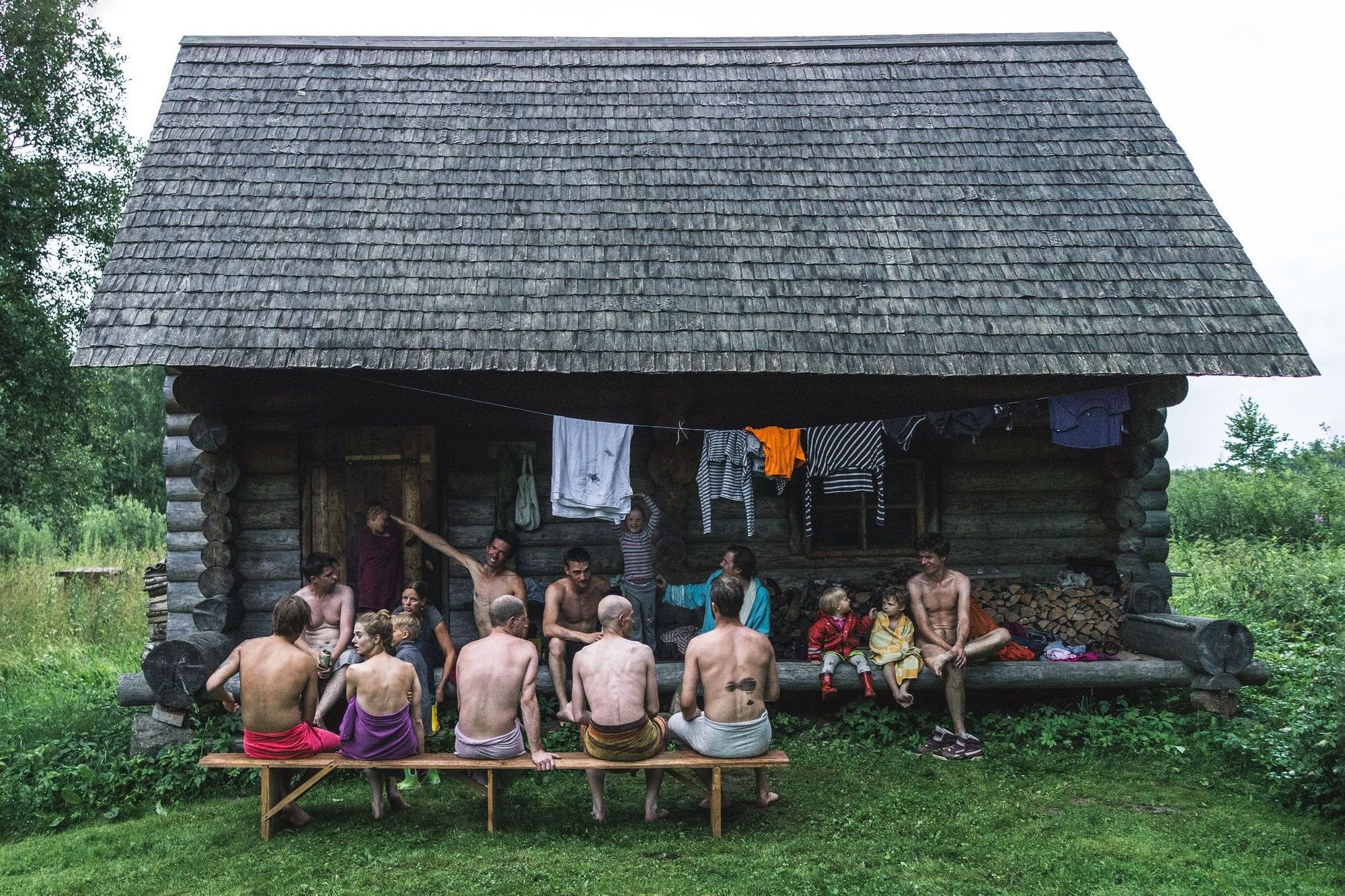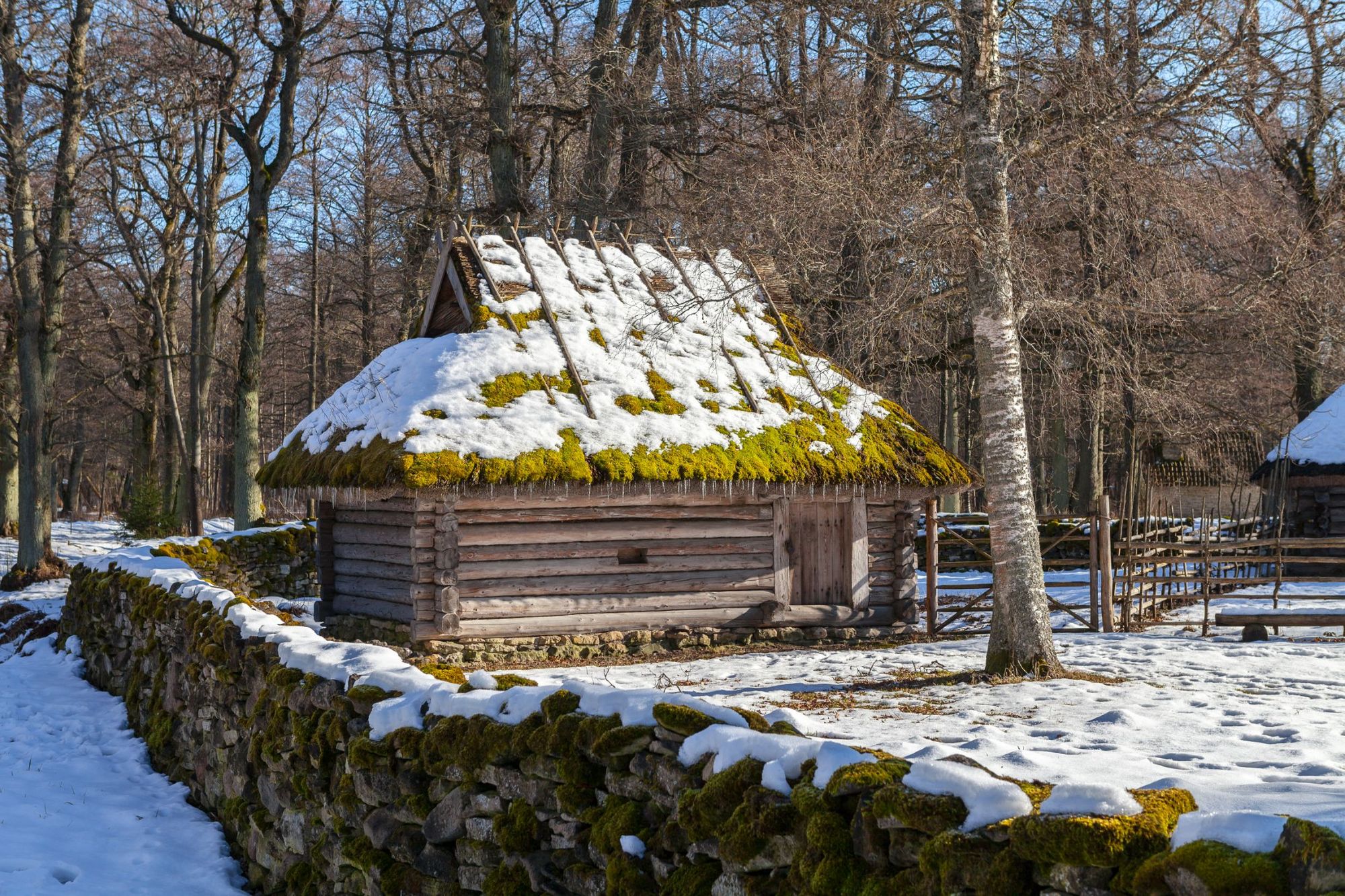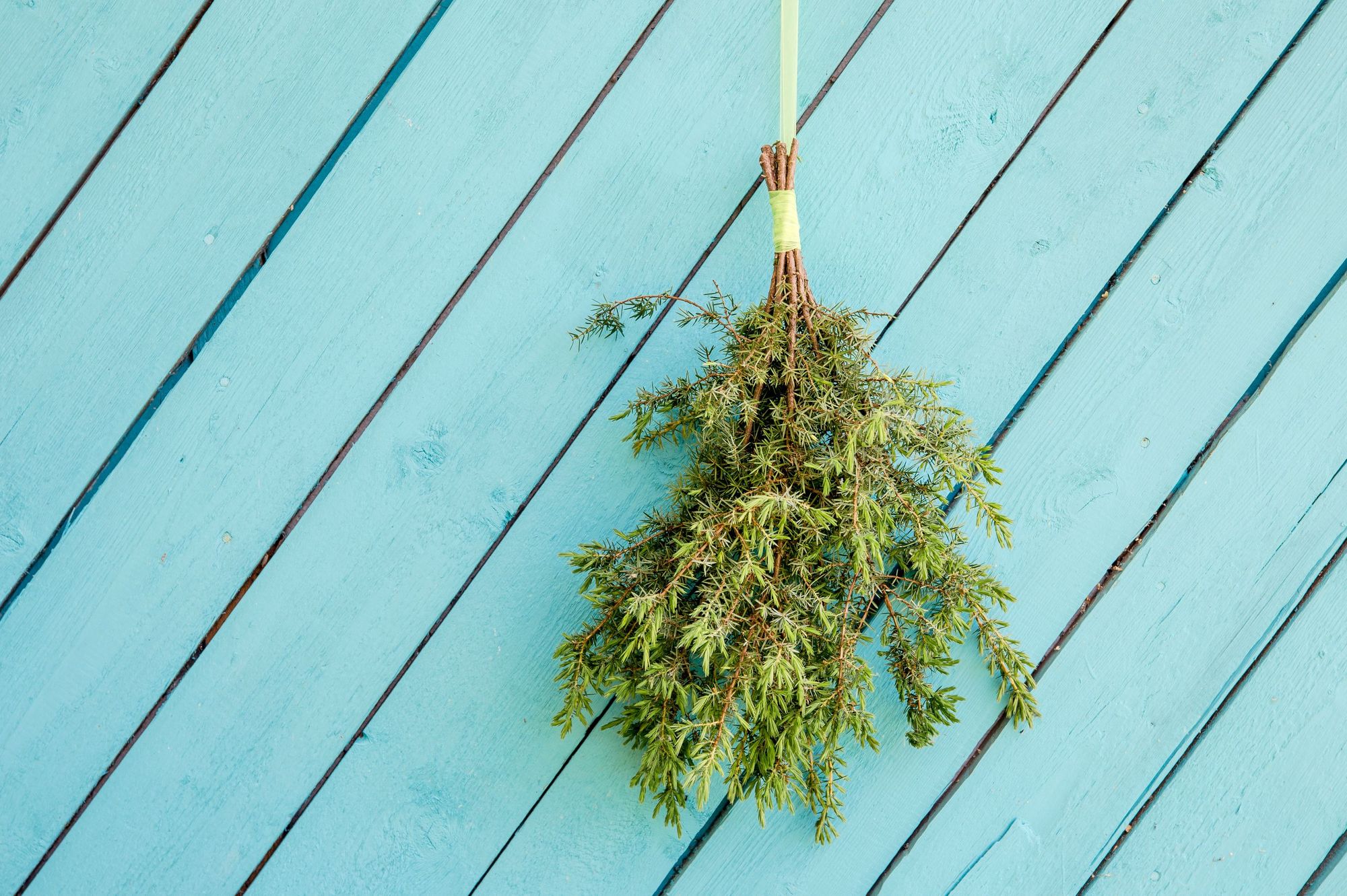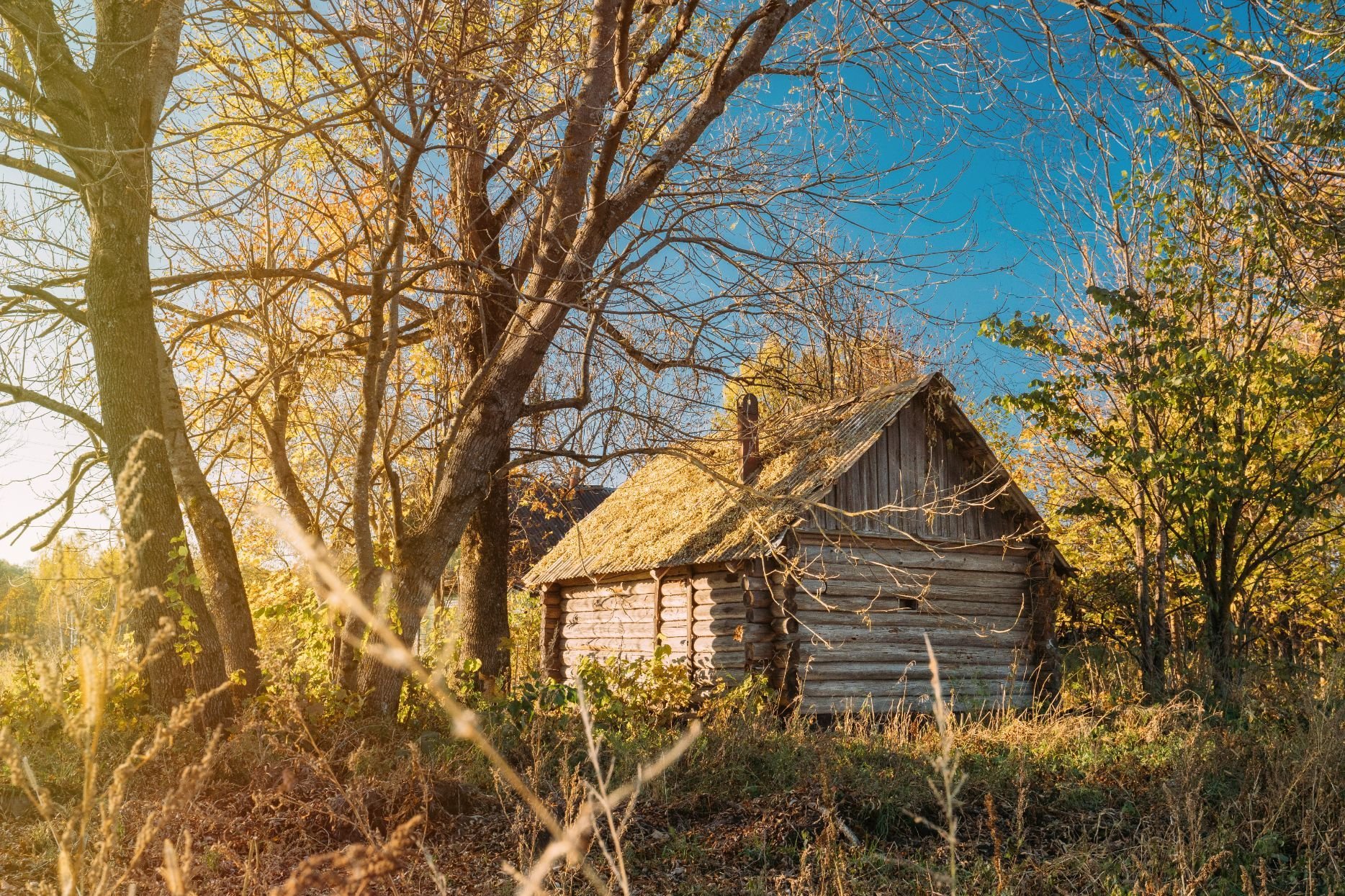
The crunch of feet on fresh snow is the only sound to be heard on the approach to the log cabin. The timber of the building has been sourced locally and blends in with the backdrop. It's stuck together with sand and clay, topped by mosses and turf and surrounded by powder-piled pine trees, the scent of which sticks in the cold, crisp air of the nature-packed Estonian forests. Clothes hang on a line outside the cabin. Only those in a towel - or indeed, wearing nothing at all - are allowed in.
This is the UNESCO-listed tradition of Suitsusaun, the Estonian smoke sauna.
"Sauna is a place for sharing and connection, cleansing, and relaxing," says Triin Asi, local Estonian host and guide for Much Better Adventures.
As the door opens, you’re hit with the heat. Lying down on the wooden bench, you can see the steam hanging on the ceiling above you, though the room is clear below. When water is poured on the stones, which have been well heated by a fire in the hours previous, they release a little of the heat they’re holding, and fill the room back up with steam, which again, rises to the roof.
Historically, steam saunas in Estonia have literally been a matter of life and death.
"The most important thing when going to the sauna is the steam, which stimulates sweating" says Triin, "Estonians have a word for this: ‘leil’, which means 'the steam generated by pouring water onto hot rocks in a sauna.' Leil has many benefits for those in need. It cleanses the skin and increases heart rate. When sitting in the sauna, you might feel it is easier to breathe and move."
Breath in. Breath out. Follow the locals, and pat yourself with the bunched birch twigs. This is known as ‘whisking’, or ominously, as ‘a gentle beating’.
"With leil comes ‘viht’, the famous sauna whisk," Asi explains. "Typically made from birch branches, a brisk beating of the body raises your temperature and acts like a massage while mixing the layers of air inside the sauna."
Whisking is meant to move the air around, scrub the skin and stimulate blood circulation. If you’re really up for it, you can be covered in honey too.
The heat is said to relax body and mind. And it’s also often said to be the original social network of Estonia - a place to talk and connect, or simply relax with others - best enjoyed after a hike, surrounded by lush nature, in good company, with a lake (or ocean) nearby to dip in and out of.

In most of the world, having a sauna in your own home is a luxury reserved for the affluent. In rural Estonia, it’s an important part of everyday life. A country house without one is an oddity.
It’s often written that smoke saunas in Estonia are UNESCO-listed, but this is actually incorrect. In fact, it’s the tradition surrounding the smoke saunas (specifically in Võromaa, in the south of the country) which is UNESCO-listed.
“It comprises a rich set of traditions including the actual bathing customs, the skills of making bath whisks, building and repairing saunas, and smoking meat in the sauna,” write UNESCO.” The tradition is celebrating its 800th anniversary in Estonia this year.
A history of the Estonian smoke sauna

"Medicinal baths and health resorts have been used in Estonia for more than 200 years, but Estonia's sauna tradition goes back even further," says Triin.
The first written records of sauna use in Estonia date back to the 13th century.
Specifically, it was in 1223 AD that a Christian ‘miracle story’ emerged in Livonia, an area covering the modern-day southern regions of Estonia and Latvia, where a murder occurred in a sauna. Don’t worry, though, that’s not part of the tradition - though saunas in Estonia were intricately linked to the cycles of life and death.
Steam saunas were used as birthing rooms, as they tended to be the cleanest rooms in the house, and due to their assumed healing properties, they were also used as a curative measure for the ill, and as a place to attend to the dying.
Historically, steam saunas in Estonia have literally been a matter of life and death, but between those two points, they were (and are) used to celebrate special occasions - and so, the tradition is connected to the living of life itself in Estonia.

"While most births and deaths no longer occur in the sauna, sauna is an important part of Estonian culture and everyday life," says Triin.
Beyond this, saunas were also used as smokehouses - namely for preserving ham - and as a form of escapism from the everyday world. For thousands of years, smoke saunas were the only type of sauna, the origins going back to caves which would be dug and covered in animal skins, with a fire left burning inside for the day beneath a pile of stones. The fire would then be extinguished and smoke cleared before the people would crowd into the cave (along with any lucky animals) and keep warm.
Steam saunas run on the same rough system today. Crucially, a traditional smoke sauna doesn’t have a chimney. These are old, crossbeam buildings, where a pile of granite stones is put on top of the sauna stone, where a fire constructed with peeled birch of alder is lit.
Even the downtown Burger King in Helsinki has a sauna...
In the old system, before heating the sauna, water is brought in and heated on the stone. It musn’t boil, it’s said, or your skin will itch. Each sauna has its own quirks, and so each has its own firemaker. The heating of the stones lasts around six hours, and the stones then heat the sauna, sending smoke into the air, and creating a clear border line which rises slowly upwards.
When the firewood is burned and the stones are hot, water is used to clean the stones, releasing steam from the stones which drives out the fumes. Curse words are not to be used in the sauna and quarrels and concerns are to be left outside. This is a spiritual place; of healing, and if you disobey these rules, legends have it you’ll have to answer to the sauna spirits, who are otherwise benevolent, said to bring good luck, and protect those present.
Smoke signals: the place of saunas today

The tradition of steam sauna is passed down from one generation to the next in southern Estonia, from the etiquette to the details of how to build a sauna properly and how to manage the stones. Children are introduced from an early age, and the cycle continues. That said, as with any old tradition, the practice of using a sauna has changed in the past few centuries.
In the 20th century, chimneys started to become commonplace on saunas in Estonia, and after Estonian independence was achieved in 1991, electric saunas grew hugely in popularity too. Today there are said to be as many types of sauna as there are people (even the downtown Burger King in Helsinki has one), but the oldest and most traditional style remains the smoke sauna.
"Laupäev on saunapäev" translates to English as "Saturday is sauna day."
Sauna remains as important as ever today. While it may no longer be where people are born and die in Estonia, new households still often build their sauna first - and the old phrase still rings true: "Laupäev on saunapäev," which translates to English as "Saturday is sauna day."
Trinn explains: "Traditionally, sauna evenings take place on Thursdays, Saturdays, and the night before a major holiday - like Christmas Eve, New Year's Eve, or June 23rd, the night before Jaanipäev (Midsummer Day). However, there are always opportunities to go to the sauna - family gatherings and birthdays are also celebrated with sauna. If you don't have a reason, inventing one is perfectly acceptable. If you visit, it's the most local experience you can have."
Officially, there are just over 100,000 saunas in the country, and unofficially, it’s believed that there are around double that - a startling figure for a nation of 1.3 million people.
"Although it may seem like a winter activity, Estonian saunas are for all year round," says Asi. And while traditional smoke saunas are most common in the Võru region in southern Estonia, there are examples dotted around the country, and so, the tradition continues to be celebrated, and passed on.

To quickly answer the obvious question, swimming suits are not typically worn but if you’re self-conscious, you can cover up with a towel. Some saunas are single sex, and some are unisex. Some other points of Estonian sauna etiquette include ensuring that the door is always shut. Don’t keep it door, even for a brief chat, or the heat will leak out. And remember, sauna time is quality relaxation time. Don’t rush. Settle in and let the steam take you on a journey.
Despite the move towards chimneys and electric saunas, the beauty and tradition of steam saunas remains alive - and the UNESCO listing and tourist interest are fuelling new interest.
Inspired? Check out our adventure, in the snow and saunas of Estonia!


